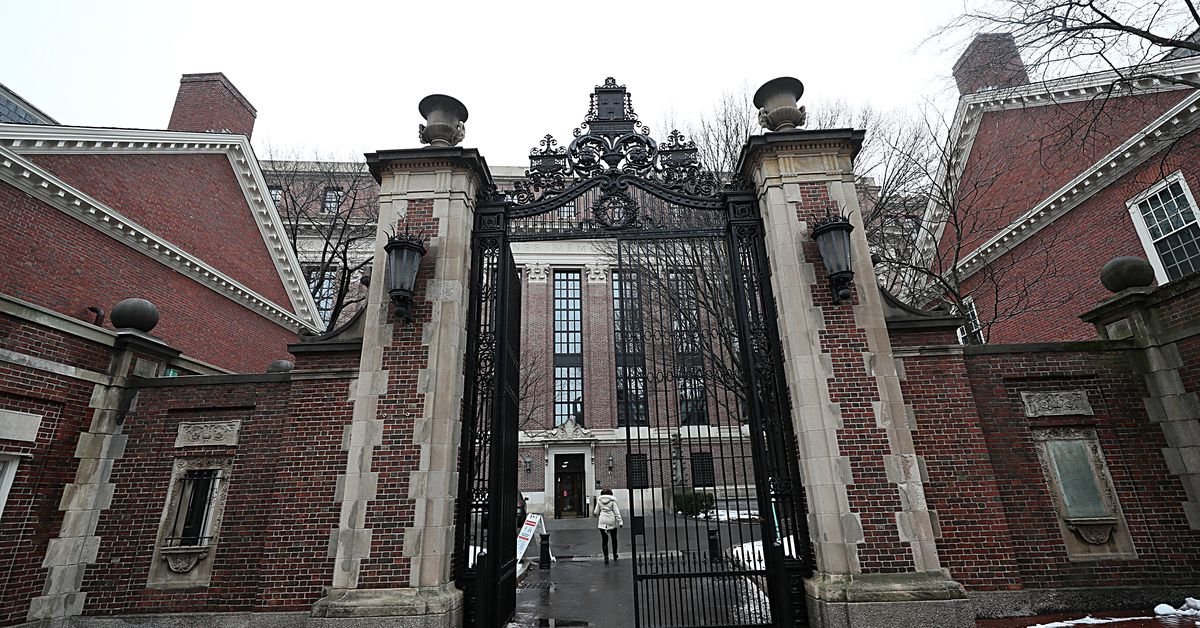[ad_1]
After years of legwork, Harvard researchers canceled plans to test a controversial theory for cooling the planet by sending sunlight-reflecting particles up into the atmosphere. Now, members of an independent advisory committee tasked with addressing ethics and safety concerns are sharing what they learned from the ill-fated project.
A policy analysis published in the journal Science on Friday highlights how important it is to talk to people on the ground before launching an experiment, especially one tied to potentially planet-altering consequences. The paper echoes recent calls to get policies in place to protect against any unintended side effects.
Until pretty recently, the thought of reflecting sunlight back into space to combat global warming — a process called solar geoengineering — seemed to be firmly rooted in science fiction. But with the climate crisis worsening, the idea has started to move from the fringes of academic research to garner more serious debate.
“Public engagement is necessary”
Some researchers and their Silicon Valley backers want to put the theory to the test. And time is running out to establish rules for how to craft those experiments responsibly, which could help determine whether solar geoengineering will do more harm than good.
“One of the core messages that comes out of this is that public engagement is necessary even when you don’t think that the impact of the experiment is going to be felt in a real way, in a concrete way, in real time. This issue has such a long tail, and it has such deeper meaning for so many people,” says Sikina Jinnah, lead author of the Science policy analysis and a professor of environmental studies at the University of California, Santa Cruz.
Harvard researchers launched the project called SCoPEx — short for Stratospheric Controlled Perturbation Experiment — back in 2017. To better understand any potential risks or benefits associated with solar geoengineering, it planned to conduct the first-ever outdoor experiment using reflective particles. It would have released some of those aerosols into the stratosphere via balloon and then piloted the balloon back through the plume to take measurements. The aim was to observe how the particles interact with each other and other elements of that environment — resulting in data that could be used to make more accurate computer models.
That never happened. There was supposed to be an engineering test flight without any particle release in Sweden in 2021, but it was scrapped after facing strong opposition from local Indigenous leaders. A big point of contention was that the researchers didn’t initially reach out to the Saami Council, which represents Saami Indigenous peoples’ organizations in the region. Members of SCoPEx’s advisory committee didn’t agree on whether to consult with the Saami since the test flight wasn’t going to release anything into the atmosphere, according to the policy analysis. The majority wound up deciding that the test flight could go ahead if there weren’t any significant environmental concerns to flag.
The Saami Council caught wind of the plans anyway and wrote a strongly worded letter to the advisory committee demanding the researchers cancel the flight. They said it was “remarkable” that the test flight would take place without consulting the Saami people or other local stakeholders, given the controversies swirling around solar geoengineering. Local environmental advocates, including Swedish chapters of Greenpeace and Friends of the Earth, also signed the letter.
Solar geoengineering is still considered a “false solution” to climate change by many activists. Injecting particles in the atmosphere attempts to recreate the way erupting volcanoes can temporarily cool the planet by releasing sulfur dioxide. But sulfur dioxide might also lead to acid rain, worsen the Antarctic ozone hole, or have other unforeseen consequences. There are also fears that solar geoengineering could detract from efforts to transition to clean energy, or lead to a dangerous swing in global temperatures if it’s ever implemented and then abruptly stopped.
“We note that [solar geoengineering using reflective particles] is a technology that entails risks of catastrophic consequences … There are therefore no acceptable reasons for allowing the SCoPEx project to be conducted either in Sweden or elsewhere,” the Saami Council letter says.
The advisory committee ultimately recommended canceling the test flight in Sweden after receiving that letter. By 2023, Harvard had told the advisory committee that it had “suspended” the project and then canceled it altogether in March of this year. The project “struggled both with intense media attention and with how to address calls from the scientific advisory committee to broadly and formally engage with the public,” Nature reported at the time, citing one of its project leaders.
“I’m grateful for the SCoPEx Advisory Committee’s insights. Their thoughtful analysis is valuable to the scientific community as it considers important questions of governance,” Frank Keutsch, who was the principal investigator for SCoPEx, tells The Verge in an email. He didn’t elaborate more on why the project ended.
It’ll take more than an ad hoc committee to effectively oversee geoengineering research moving forward, according to the newly published policy analysis. “The time is ripe for governments to begin discussing coordination of research governance,” it says.
Those talks have already started at the European Commission and the United Nations Environment Assembly, although they haven’t led to any concrete new policies yet. There has been a moratorium on large-scale geoengineering since a United Nations biodiversity conference in 2010, but it excludes small-scale scientific research.
And small fly-by-night initiatives have become a bigger concern lately. Last year, the founders of one geoengineering startup grilled fungicide in a California parking lot to produce sulfur dioxide gas that they then attempted to launch into the atmosphere via weather balloons. That followed a similar balloon launch in Mexico that prompted the government there to bar solar geoengineering experiments. The policy analysis calls the startup’s efforts “irresponsible” and “not tied to any legitimate scientific pursuit.”
Since then, there have been calls to either lay down rules for how to regulate future experiments or to stop solar geoengineering altogether. But without broader policies in place, keeping up with new geoengineering efforts gets to be a bit like playing whack-a-mole around the world.
Those policies could also ensure that nearby communities get to have a say in projects that might affect them. And as we’ve learned with SCoPEx, even more studious efforts can skip that step to their own detriment.
[ad_2]
Source link





